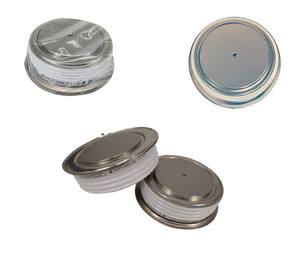Thyristors Online | High-Quality Power Semiconductors
**”Thyristors Unveiled: The Tiny Titans of Power Control”**
(Defining Thyristors: A Concise Introduction to the Component)
Imagine a world where controlling massive amounts of electrical power is as simple as flipping a switch. Sounds like magic, right? Well, it’s not magic—it’s the work of a tiny yet mighty component called the thyristor. These unassuming devices are the unsung heroes of modern electronics, quietly powering everything from your household dimmer switches to industrial machinery. Let’s dive into the fascinating world of thyristors and uncover why they’re the tiny titans of power control.
At their core, thyristors are semiconductor devices designed to handle high voltages and currents. Think of them as the bouncers of the electrical world—they decide when and how much power gets through. Unlike a regular switch, which is either fully on or off, thyristors can be triggered to allow current flow in a controlled manner. This makes them perfect for applications where precision and reliability are key.
The story of the thyristor begins in the 1950s, when engineers were searching for a way to improve power control in electrical systems. Enter the silicon-controlled rectifier (SCR), the most common type of thyristor. With its unique ability to latch on and stay conducting until the current drops below a certain level, the SCR revolutionized industries. Suddenly, controlling heavy machinery, regulating motor speeds, and even dimming lights became not just possible, but efficient and cost-effective.
But how does a thyristor actually work? Picture a sandwich with layers of semiconductor material—specifically, alternating layers of P-type and N-type silicon. When a small current is applied to the gate terminal, it triggers the thyristor to switch from its off state to its on state, allowing a much larger current to flow through. Once it’s on, it stays on until the current is interrupted. This latching behavior is what makes thyristors so powerful and versatile.
One of the coolest things about thyristors is their ability to handle extreme conditions. They’re like the superheroes of the electronics world, capable of withstanding high temperatures, massive currents, and even voltage spikes. This ruggedness makes them ideal for use in harsh environments, such as power plants, electric vehicles, and renewable energy systems. In fact, thyristors play a crucial role in converting the raw power generated by wind turbines and solar panels into usable electricity for our homes and businesses.
But thyristors aren’t just about brute strength—they’re also incredibly precise. In applications like light dimmers and motor speed controllers, they allow for smooth, continuous adjustments. Ever marveled at how effortlessly you can dim the lights in your living room? Thank a thyristor for that. They’re also used in medical equipment, where precise control of electrical signals can mean the difference between life and death.
(Defining Thyristors: A Concise Introduction to the Component)
Despite their small size, thyristors have a massive impact on our daily lives. They’re the silent workhorses behind the scenes, ensuring that power flows where it’s needed, when it’s needed. So the next time you flip a switch or adjust a dial, take a moment to appreciate the tiny titans of power control—thyristors. They may not be flashy, but they’re definitely electrifying.


